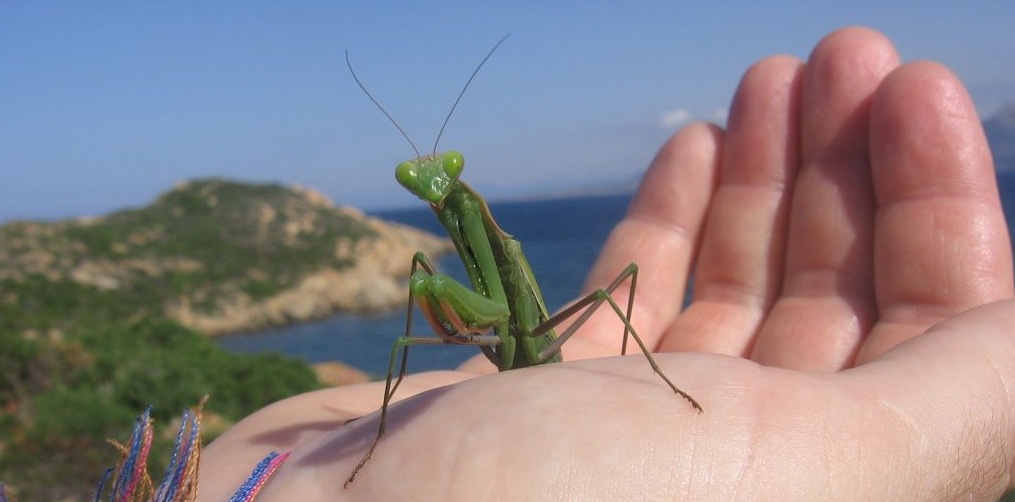Flightless wonders

A project I am working on with a friend on the evolution of dispersal led me to dig up some work on similar issues in insects. Insects are an obvious model system for those interested in these types of questions simply because of the huge variety of ways they disperse. Many people might recognize insects as “gross things with six legs and wings”. In the extreme case of dispersal limitation, some insects have lost not only the ability to fly, but lost their wings altogether. Given that the success of the insects is often attributed to their winged-ness, the loss of wings might seem like evolution gone wrong. David Wagner and James Liebherr wrote a nice review of the reasons flightlessness might be advantageous, but it was a reply to their work that really sparked my interest. (You can view those here.)
It seems that some mantids (like the one above I photographed in Corsica) have reduced or no wings. No biggy; this is widespread in the insect world. But what’s cool is that in many mantid species, males have wings while females’ are lost or reduced. Differences among sexes of plants and animals (sexual dimorphism) are always interesting to biologists, but that this difference is in such a functionally important trait is really intriguing.
Now, for the icing on the cake: Bats prey on mantids, and use high-pitched echolocation to find them. Many insects can hear, including mantids. But, if you can’t fly, you’re likely not a food target for most bats, right? In what might be my new favorite example of selection, for mantid species that are sexually dimorphic with respect to flight, flightless females are not sensitive to the frequencies emitted by bats, while males of the very same species that have the ability to fly are able to hear the sounds emitted by bats. Well played, my mantid friends, well played.